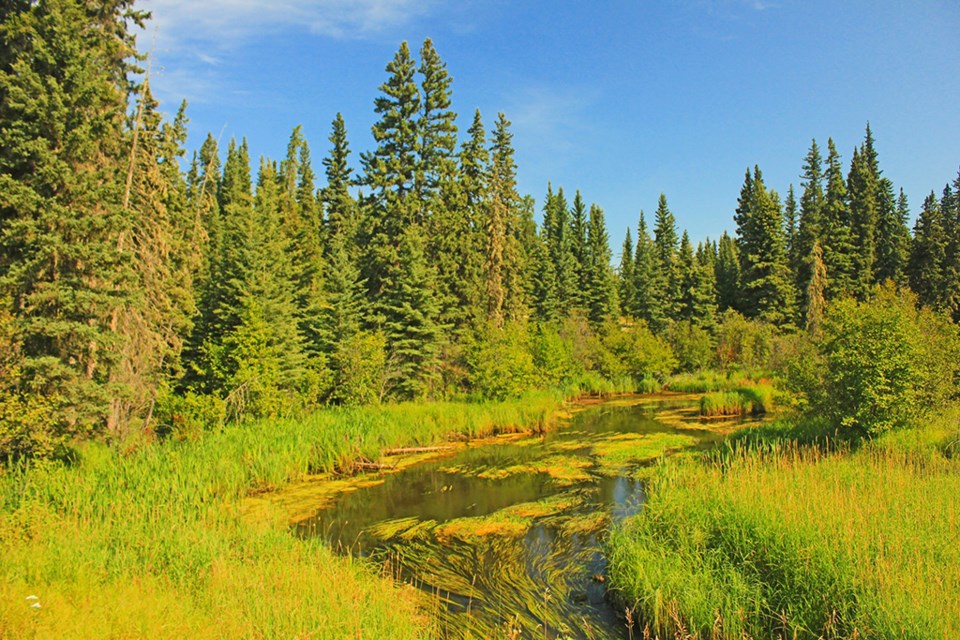THE CONVERSATION — Natural health products and phytomedicines (plant-based medicines) are used in many countries as the first choice of treatment. This market represents a significant proportion of the total market for health products, particularly in developing countries where a large proportion of the population depends on these products for treatment.
These products are deeply rooted in ancestral knowledge and traditions and are passed down from generation to generation in Indigenous communities. This knowledge represents an invaluable source of information for scientific research.
By exploring this knowledge, researchers can discover new medicinal molecules. Some molecules isolated from plants have become major therapeutic agents in modern medicine. One example is paclitaxel, an anti-cancer agent used in chemotherapy that was isolated from ground hemlock (Taxus canadensis), a shrub used by Indigenous peoples to treat a variety of health problems.
For several years, the LASEVE laboratory, located at the Université du Québec à Chicoutimi, has been using its expertise in phytochemical, pharmacognostic and pharmacological research to explore the active compounds of plants endemic to Canada, based on the ancestral knowledge of Indigenous peoples. The laboratory’s expertise ranges from identifying plants with high therapeutic potential, to determining their chemical composition, developing extraction methods, isolating compounds and assessing their biological activity.
The boreal forest: a source of natural medicines
The LASEVE team has studied a number of plant species from the boreal forest that are used in traditional Indigenous medicine.
The bunchberry (Cornus canadensis), for example, is traditionally used as an antiviral remedy by First Nations peoples. Our research on this species has shown that the leaf extract has therapeutic activity against herpes simplex type 1 (HSV-1), a virus responsible for cold sores. Thanks to an in-depth chemical analysis, we isolated around ten molecules from this extract. These molecules, which belong to the polyphenol family, are natural substances with antioxidant properties that are found in many foods and help to protect the body against damage caused by free radicals. Among them, the tannin named Tellimagrandin 1 has been identified as the most active polyphenolic molecule in the extract for inhibiting the HSV-1 virus.
Other studies in our laboratory have looked at the traditional use of balsam poplar (Populus balsamifera) buds to combat inflammatory problems and infections. Several molecules found in the buds have been identified, and some belonging to the chemical family of balsacones have shown interesting antibacterial properties, particularly against methicillin-resistant Staphylococcus aureus, also known as SARM. This bacterium can cause very serious infections that are difficult to treat because of their resistance to several antibiotics, including methicillin. Other molecules in this same family have shown promising effects in the treatment of psoriasis, due to their ability to reduce inflammation and oxidative damage.
A number of compounds with anti-inflammatory properties, including new molecules known as nudicaulosides, have been isolated from the sarsaparilla plant (Aralia nudicaulis), known to Indigenous people for its many benefits. The extract obtained from the underground stem (or rhizome) showed promising antioxidant and anti-inflammatory activities. These indicate potential protective effects against sun-induced oxidative stress on skin cells. This activity is due to the high content of phenolic compounds in the extract.
Adaptogenic plants from the boreal forest
In today’s fast-paced society, stress has become a scourge that can have serious repercussions on health. Faced with this public health problem, it has become crucial to find ways of strengthening our ability to resist stress and preserve our well-being. Adaptogenic plants are attracting attention from researchers as a response to this challenge.
These plants have a regulating effect, particularly on our immune system, which improves the body’s ability to adapt to environmental stress. Echinacea, astragalus and the famous ginseng are just a few examples of adaptogenic plants.
As the demand for these plants is constantly increasing, we have chosen to explore the adaptogenic potential of two species of arali native to North America, Aralia nudicaulis and Aralia hispida. These two plants, which are in the same family as ginseng, have been little studied until now, even though they are frequently used in traditional medicine. We have begun chemical and biological characterization of these plants in our laboratories and have already identified several bioactive molecules.
In conclusion, our research group has been working for several years to explore the therapeutic potential hidden in boreal forest plants. In this context, the traditional medicine of the First Nations is a precious asset.
These cultures possess ancestral knowledge and an in-depth understanding of plants that deserves to be recognized, preserved and promoted for the benefit of society as a whole.
It is important to remember that caution is the watchword when it comes to natural products. These products are not always safe, since they contain a mixture of compounds, only some of which have beneficial properties, while others may cause undesirable effects or interfere with other medicines.
It is therefore important to consult a health professional before taking any natural remedy.
___
André Pichette is a member of the Ordre des chimistes du Québec (OCQ). He has received funding from Fonds de recherche du Québec - Santé (FRQS), Natural Sciences and Engineering Research Council of Canada (NSERC) - Alliance - Mathematics of Information Technology and Complex Systems (MITACS), Canadian Institutes of Health Research (CIHR).
Jean Legault is a member of the Ordre des chimistes du Québec. He has received funding from the FQRNT, FRQS, NSERC and Mitacs.
Marianne Piochon and Vakhtang Mshvildadze do not work for, consult, own shares in or receive funding from any company or organization that would benefit from this article, and have disclosed no relevant affiliations beyond their academic appointment.
___
This article is republished from The Conversation under a Creative Commons license. Disclosure information is available on the original site. .
Marianne Piochon, Assistante de recherche, MSc, Université du Québec à Chicoutimi (UQAC); Andre Pichette, Professeur en chimie des produits naturels, Université du Québec à Chicoutimi (UQAC); Jean Legault, Professeur-chercheur en biochimie et pharmacologie, The Conversation




